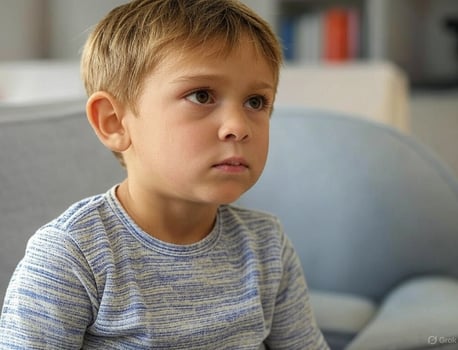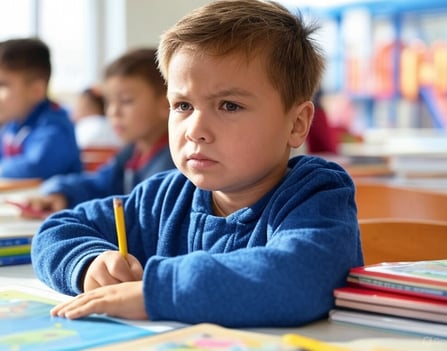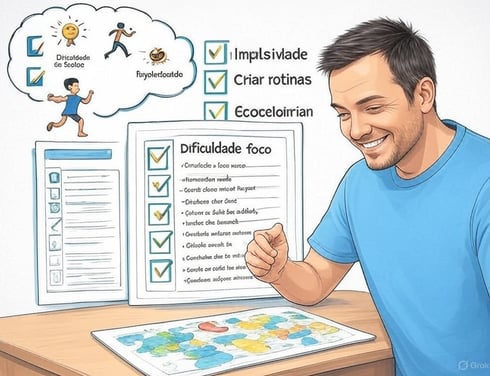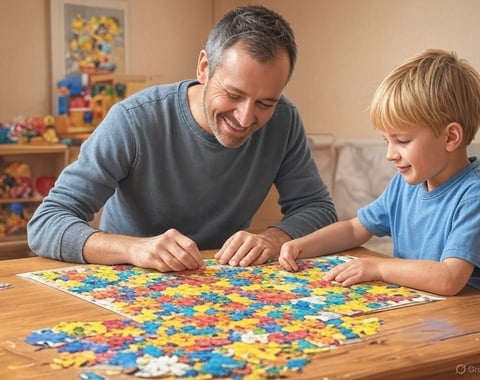ADHD in Children: How to Identify and Support Development
Learn how to recognize signs of ADHD in children and explore practical strategies to support their growth at home and in the classroom.


Methods to Help a Child with ADHD
Treatment and support for children with ADHD involve a multidisciplinary approach, combining environmental adjustments, behavioral strategies, and, in some cases, medical interventions.
1. Routine and School Environment Adaptations
Create an organized study environment free from distractions.
Break school tasks into smaller parts to facilitate execution.
Set clear rules and reinforce positive behaviors with praise and rewards.
2. Strategies to Improve Focus and Discipline
Use task lists and visual reminders to organize daily activities.
Introduce short breaks during study sessions to maintain focus.
Encourage physical activities, which help reduce hyperactivity and improve attention.
3. Communication and Emotional Support
Show patience and understanding when dealing with behavioral challenges.
Encourage the expression of feelings and help the child find solutions to their difficulties.
Work closely with teachers and professionals to ensure proper support.
Identifying and understanding ADHD in children is essential for fostering healthy and balanced development. With the right support, children with ADHD can overcome challenges and fully develop their skills. If you suspect your child has ADHD, seek guidance from a professional for an accurate diagnosis and an effective follow-up plan.
Attention Deficit Hyperactivity Disorder (ADHD) is one of the most common neurobehavioral disorders in childhood, affecting millions of children worldwide. Symptoms can significantly impact learning, behavior, and social interaction. Identifying and understanding ADHD is essential for parents, teachers, and caregivers to provide the right support. In this article, we discuss the signs of the disorder, the diagnostic process, and the best strategies to help a child's development.
Signs of ADHD in Children
Many children are naturally active and easily distracted, but ADHD goes beyond that. It manifests as persistent patterns of inattention, hyperactivity, and impulsivity that interfere with academic performance and family routines. The main signs include:
1. Difficulty Concentrating at School
Struggles to follow instructions and complete tasks.
Easily distracted by sounds, movements, and external activities.
Frequently loses school supplies like pencils, notebooks, and toys.
2. Hyperactivity and Impulsivity
Cannot stay still for long, constantly moving.
Interrupts conversations and other people's activities.
Has difficulty waiting for their turn to speak or play.
3. Social and Emotional Challenges
Struggles to make and maintain friendships.
May act without thinking, causing problems in social interactions.
Easily frustrated and prone to temper tantrums.


How to Confirm the Diagnosis?
Identifying ADHD requires a careful evaluation by a specialized professional. The diagnosis is not based on a single test but on a detailed analysis of the child's behavior in different environments.
Difference Between Normal Distraction and ADHD
Many children can be distracted or restless, but in ADHD, these behaviors are persistent and significantly affect school and social life.
Medical and Psychological Assessment
Interviews with parents, teachers, and caregivers.
Standardized questionnaires and tests to measure attention and impulsivity.
Observation of behavior in different settings.




